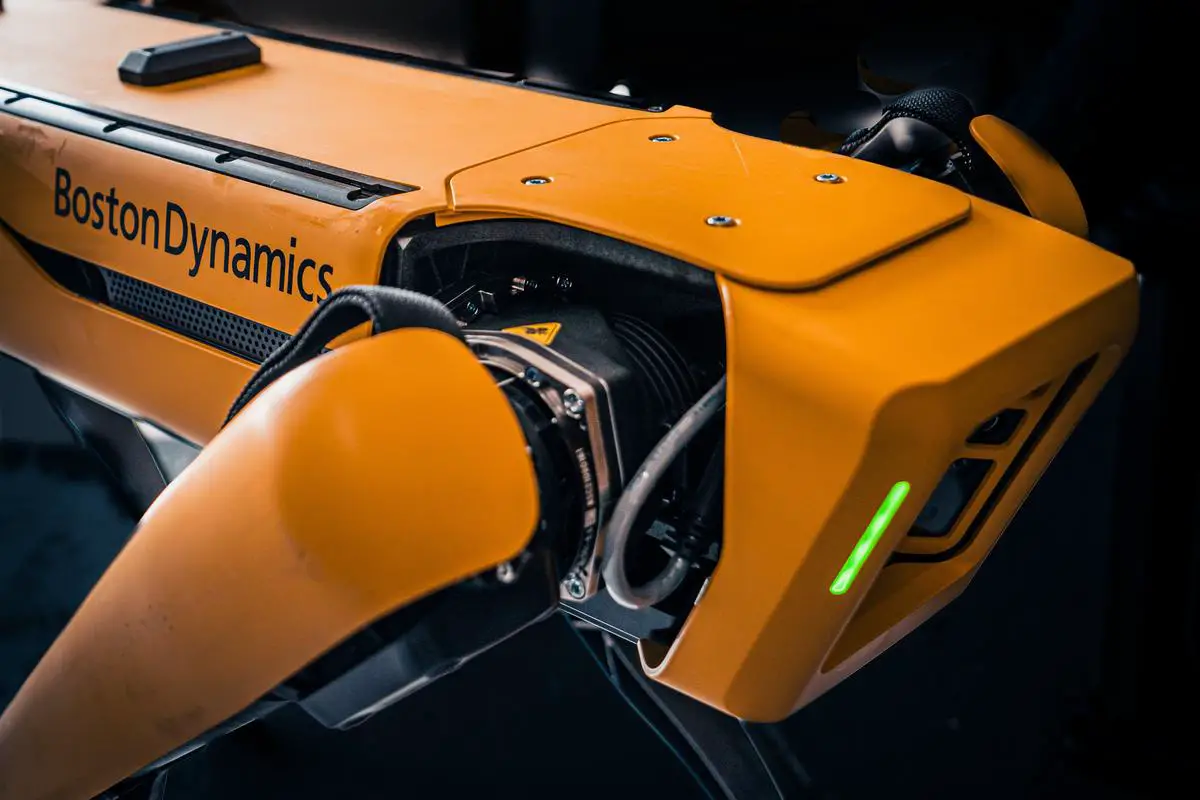Harnessing AI for Vehicle Predictive Maintenance: A Comprehensive Guide
As our world propels into the future, technology continues to weave its way through the fabric of every aspect of our lives. With a significant breakthrough in the fields of Artificial Intelligence (AI) and Machine Learning (ML), modern systems are now geared to work more intelligently, offering a high level of efficiency. One such area where this advancement has made a poignant impact is vehicle maintenance. More specifically, the use of AI in predictive maintenance has revolutionized the entire auto industry, offering immense potential to vehicle owners, operators, and fleet managers. Not only does this innovative approach usher in cost efficiency, but it also heralds significant improvements in uptime. This immersion into AI for predictive maintenance in vehicles will help you understand it better, exploring its functionalities, different techniques, implementation process, and potential future trends.
Understanding Predictive Maintenance
Understanding Predictive Maintenance and Its Applications in Vehicles
Predictive maintenance in vehicles employs various techniques to evaluate the condition of equipment while it operates, predicting the estimated time of maintenance. The process involves gathering data from multiple sources, including the Internet of Things (IoT), sensors, and vehicle history, to estimate maintenance intervals and fix issues before they escalate into bigger problems. It provides insights into when a particular vehicle part is likely to fail or when it may not perform optimally, enabling proactive maintenance planning.
The Role of Artificial Intelligence in Predictive Maintenance
Artificial Intelligence (AI) plays a crucial role in predictive vehicle maintenance by improving the accuracy of these predictions. AI uses machine learning algorithms to analyze past and real-time data from various sources to determine the probable time of maintenance. These algorithms identify patterns and trends in data, including seemingly unrelated factors that can impact a vehicle’s performance. The AI system gets smarter with every piece of data it analyzes, continually enhancing the accuracy of its predictions and the effectiveness of the intervention strategies it recommends.
Benefits of Predictive Maintenance Over Traditional Techniques
Predictive maintenance provides a significant advantage over traditional techniques in terms of cost efficiency. Traditional maintenance often involves scheduled servicing based on mileage or time intervals, irrespective of whether the vehicle parts require servicing or not. This approach can lead to unnecessary expenses and vehicle downtime. On the other hand, predictive maintenance optimizes the maintenance process by servicing only when necessary. It avoids premature replacements while reducing unplanned downtime due to sudden equipment failure, leading to operational cost savings.
Improved uptime is another compelling advantage of predictive maintenance. Traditional maintenance can result in prolonged, unplanned downtime’s due to unexpected breakdowns. Predictive maintenance, however, enables vehicle owners and operators to detect potential issues in advance, scheduling maintenance procedures in a way that minimizes downtime and keeps the operations running smoothly.
Advantages of Predictive Maintenance for Vehicle Owners, Operators, and Fleet Managers
Predictive maintenance proves advantageous to vehicle owners, operators, and fleet managers in various ways. By identifying potential problems early, predictive maintenance can prevent catastrophic vehicle failures, optimizing vehicle performance, and enhancing safety. From a financial perspective, predictive maintenance can lower operating costs by reducing unexpected breakdowns and eliminating unnecessary repairs or replacements.
For fleet managers, predictive maintenance can be an invaluable tool for improving vehicle availability and reliability. It allows for more precise scheduling and planning, aiding in managing the fleet efficiently and effectively. Moreover, it can reduce labor costs as technicians spend less time diagnosing problems and more time fixing them. The information provided by predictive maintenance can help fleet managers ensure their vehicles are always in top condition, leading to increased productivity and client satisfaction.
A tremendous impact on cost reduction, operational efficiency enhancement, and safety improvement can be seen through the application of AI-powered predictive maintenance techniques. By identifying abnormalities before they morph into more significant problems, predictive maintenance ensures heightened reliability and longevity of vehicles while also optimizing their performance.

Role of AI in Predictive Maintenance
AI’s Contribution to Predictive Maintenance in Automotive Field
Envisioned to significantly alter the landscape of car maintenance, Artificial Intelligence (AI) holds notable potential. One of its applications, predictive maintenance, aims to avert device breakdown by scrutinizing manufacturing data to identify tendencies and prophesy issues before they transpire – an area where AI can lend a hand on a large scale within the automobile sector. The synthesis of machine learning techniques and AI-based algorithms helps in analyzing historical and live data from vehicles to prognosticate potential breakdowns in the future. As a result, sudden, unanticipated vehicle failures can be mitigated, resulting in a dramatic decrease in downtime and associated costs.
Functioning of AI in Predictive Maintenance
Predictive maintenance with the help of AI typically involves the collection of data from numerous vehicle sensors. These sensors can gather data about engine temperature, oil levels, tire pressure, and any other pertinent information. AI algorithms then analyze this massive amount of information over time to identify potential patterns or anomalies that might indicate a potential problem or imminent failure. This predictive analysis can identify problems before they become serious, enabling quick preventive action.
Alerts and Proactive Measures
One of the significant benefits of AI in predictive maintenance is its ability to provide actionable alerts. These alerts can notify the vehicle owner or fleet manager of any predicted issue, often before a human operator would notice anything amiss. This system empowers them to take proactive measures for vehicle maintenance, thereby preventing unexpected breakdowns. For instance, if the AI system predicts that a vehicle’s engine is likely to overheat, it can generate an alert so coolant can be added before the vehicle overheats and breaks down.
Increasing Efficiency and Reliability
Through AI-powered predictive maintenance, potential issues can be addressed before they develop into bigger problems that might require expensive repairs or lead to vehicle downtime. Regular maintenance based on predictive indications can help ensure the vehicle always remains in good running condition, enhancing the reliability of the vehicle. This predictive monitoring and maintenance can also improve operational efficiency since vehicle failures can be efficiently managed and unplanned downtime can be significantly reduced.
Data-Driven Insights
AI also has the ability to provide data-driven insights based on the collected information and forecasted patterns. These insights can help in comprehensive fleet management, informing decisions about vehicle lifecycle, replacements, and repair schedules. It’s a paradigm shift from reactive to proactive and data-driven decision-making in vehicle maintenance, which not only saves costs but also extends the lifetime and performance of vehicles.
AI’s Promising Role in Predictive Vehicle Maintenance
The future of AI in predictive vehicle maintenance holds great promise. Connected and autonomous cars already incorporate AI and machine learning to forecast and prevent maintenance issues. With continual advancements in AI algorithms and technology, the possibilities for improvement are endless. Future AI integration into vehicles could also include predictive road condition monitoring, traffic forecasting, and more sophisticated driver-assistance systems, all aimed at making our commutes safer and more efficient.

AI Techniques Used in Predictive Maintenance
Decoding AI Methods Used in Predictive Vehicle Maintenance
Understanding how Artificial Intelligence (AI) methods are applied in predictive vehicle maintenance provides a glimpse into the profound transformation underway in the automotive industry. Techniques used include machine learning, pattern recognition, and deep learning. These innovative tools allow for the prediction and prevention of potential vehicle failures before they happen, creating a new era of intelligent, self-monitoring vehicles.
Machine Learning in Predictive Maintenance
Machine learning is an AI technique that allows systems to learn and improve from experience. In predictive maintenance, machine learning algorithms are used to analyze data collected from vehicle sensors. This data can include factors like engine vibrations, oil temperatures, and battery health, among others.
Through machine learning, recurring patterns within this data can be identified, which enables the system to predict potential issues before they occur. For example, if the algorithm detects unusual engine vibrations, it may predict a possible engine failure in the near future. With this kind of system, vehicle owners can be prompted to conduct maintenance checks, subsequently helping prevent severe damage and costly repairs.
Pattern Recognition in Predictive Maintenance
Pattern recognition is another AI technique used in predictive maintenance. It involves identifying and classifying data patterns to make predictions. In vehicles, pattern recognition algorithms can classify patterns in vehicle sensor data to detect irregularities and forecast failures.
As the name suggests, pattern recognition focuses on recognizing specific patterns or anomalies in the recorded data. So, if the vehicle’s system records an unusual pattern in the brake or transmission operations, for example, it may recognize this as a sign of a potential problem, helping to alert the vehicle operator in time to prevent a major breakdown.
Deep Learning Techniques in Predictive Maintenance
Deep learning is a subset of machine learning that mimics the workings of the human brain, making it a powerful tool for data processing and predictions. In predictive maintenance, deep learning techniques are used to analyze large amounts of complex vehicle data.
Just like the human brain, deep learning models learn by example. Given enough data, these models can make predictions about when vehicle parts are likely to fail based on past experiences. Using deep learning models, a vehicle’s system can predict maintenance needs with high accuracy, ultimately increasing efficiency, safety, and reliability.
The application of Artificial Intelligence (AI) technologies like machine learning, pattern recognition, and deep learning is revolutionizing the accuracy and efficiency of predictive maintenance in vehicles. These AI methods work tirelessly to analyze vehicular data in real-time, providing insights about potential failures, and ensuring drivers have the relevant data they need to avert any vehicle malfunctions before they take place.

Implementing AI Predictive Maintenance in Vehicles
AI Deployment for Proactive Maintenance in Automobiles
Artificial Intelligence (AI) continues to bring transformative changes in numerous sectors, including the automobile industry. One of its significant applications within this sphere is in the area of predictive maintenance for vehicles. Here, AI is employed to preemptively predict possible component failures, thus saving precious time and reducing expenditure associated with vehicle maintenance.
Data Collection and Processing
Predictive maintenance in vehicles begins with data collection and processing. Vehicles are equipped with a multitude of sensors, cameras, and other devices that monitor different aspects of vehicle performance, such as engine temperature, brake system health, tire pressure, and more. This data is then collected continuously while the vehicle is in operation.
Once the data is collected, it must be processed to convert the raw readings into a usable format. Machine learning algorithms are often used in this processing stage to clean the data and eliminate any unnecessary or erroneous information.
Model Training and Deployment
Next, the processed data is used to ‘train’ machine learning models. These models analyze the data to identify patterns and trends that could indicate possible issues with the vehicle’s components. They use this analysis to make predictions about when a particular part might need attention or replacement.
Once the model is adequately trained, it is deployed into the vehicle’s system. The deployed model then continuously receives and analyzes data from the car’s sensors in real-time to predict potential issues.
Real-Time Operation and Optimization
The key value of predictive maintenance is evident in its real-time operation. A properly implemented AI system can quickly identify and alert the driver or maintenance team about developing issues, saving costly repairs and downtime. Furthermore, these systems learn over time, consistently optimizing their prediction accuracy as they process more and more data.
Successful Applications of AI in Predictive Maintenance
Several auto manufacturers have already begun adopting AI for predictive maintenance in their vehicles. For instance, Tesla’s electric vehicles have built-in AI that continually monitors vehicle health and proactively alerts the owner when it’s time for maintenance. Similarly, Toyota uses AI to predict and prevent equipment failures in its production lines, significantly reducing downtime.
Another case of AI predictive maintenance implementation in the commercial vehicle sector is Man Truck & Bus, a leading international provider of commercial vehicles and transport solutions. They utilize AI to analyze telemetry data from vehicles to ensure fleet operators’ uptime, thereby reducing unplanned repair work.
Final Thoughts
The industry-shaping capability of artificial intelligence to provide timely and accurate predictions about vehicle maintenance is poised to reinvent the automotive landscape. By addressing potential equipment failures proactively, AI-driven predictive maintenance can drive considerable savings in repair costs, increase the lifespan of vehicles, and enhance the safety of vehicle operation.

Future Trends in AI for Vehicle Maintenance
Looking Ahead: AI’s Future in Vehicle Predictive Maintenance
The potential for integrating artificial intelligence in vehicle predictive maintenance is boundless. Through the integration of ever-advancing machine learning algorithms, Internet of Things (IoT) systems, and increasing industry adoption, conventional vehicle upkeep is set to transform into a data-driven, highly-efficient process.
In the near future, we could witness a surge in the incorporation of IoT technology in vehicles. IoT sensors, embedded in vehicles, can collect exhaustive data concerning operational performance, anomalies, driver behavior, and the state of core automotive components. Utilizing cloud computing, this massive data can be stored and processed for real-time predictive maintenance, transitioning from the existing time-based servicing to a more condition-oriented approach, thereby availing heightened safety measures and reduced maintenance expenses.
In addition, the progression of machine learning techniques introduces an extra level of refinement to the predictive maintenance system. With machine learning, the system doesn’t just accumulate data, but also learns from it, offering remedial suggestions, forecasting failures, and providing a precise status report about vehicle and component health. These intricate algorithms can recognize patterns and forecast results with an extraordinary level of precision, effectively indicating when parts may likely fail or need servicing.
We are also witnessing an upward trend in the application of AI in vehicle predictive maintenance within the automotive industry. Manufacturers and auto service providers are leveraging AI to enhance their offerings, preempt failures, and boost customer satisfaction. As more vehicles become autonomous and connected, this trend is predicted to continue, amplifying the demand for AI and predictive analytics for the purpose of instantaneous fault identification and anticipatory maintenance.
Potential Challenges and Solutions
However, despite the promising advancements, there are potential challenges in the application of AI for predictive maintenance in vehicles. For instance, there’s considerable complexity in collecting quality data, dealing with vehicle diversity, and actualizing real-time analytics. Moreover, the cost involved in integrating AI and IoT technology into vehicles could also pose stiff challenges, particularly for low-cost vehicles.
To deal with data-related issues, robust algorithms need to be developed that can deal with diverse data types, handle inaccuracies and overcome the lack of historical failure data. In terms of cost, partnerships with tech companies and volume production can bring down expenses and make these advanced features accessible for a broader consumer base.
The value of AI in predictive vehicle maintenance is substantial, given the benefits of decreased downtime, improved safety, and reduced maintenance costs. And while there may be obstacles on the path, the momentum for deploying AI in this field suggests a bright future for predictive maintenance in vehicles.

The emergence of AI in predictive maintenance is undeniably transforming the vehicle industry, introducing efficacies that were unimaginable only a few years back. Modern vehicles, equipped with AI and machine learning algorithms, are now capitalizing on extensive data to predict potential hardware failures, hence drastically increasing vehicle lifespan and reliability. The future holds even more promise as integrated IoT systems, enhance these algorithms, spearheading a new era of highly intelligent vehicle maintenance. However, as these futuristic technologies become more mainstream, there will be new challenges to tackle. Therefore, continuing innovation, research, and integrated solutions would be the way forward in maximizing these advancements in vehicle maintenance. As users, understanding these cutting-edge transformations will enable us to harness the full potential of our vehicles while standing at the forefront of a rapidly advancing technological era.
Discover Writio, an exceptional AI content writer that crafts engaging articles for websites and blogs. This insightful piece was crafted by Writio.
